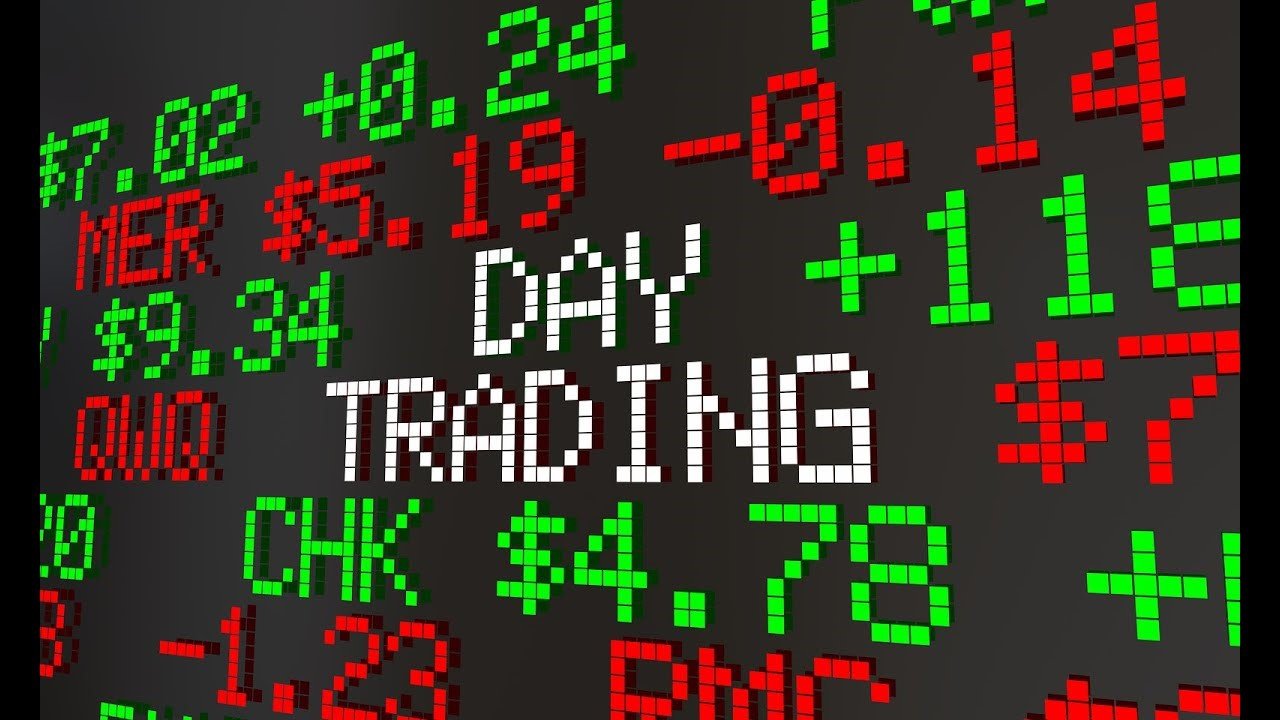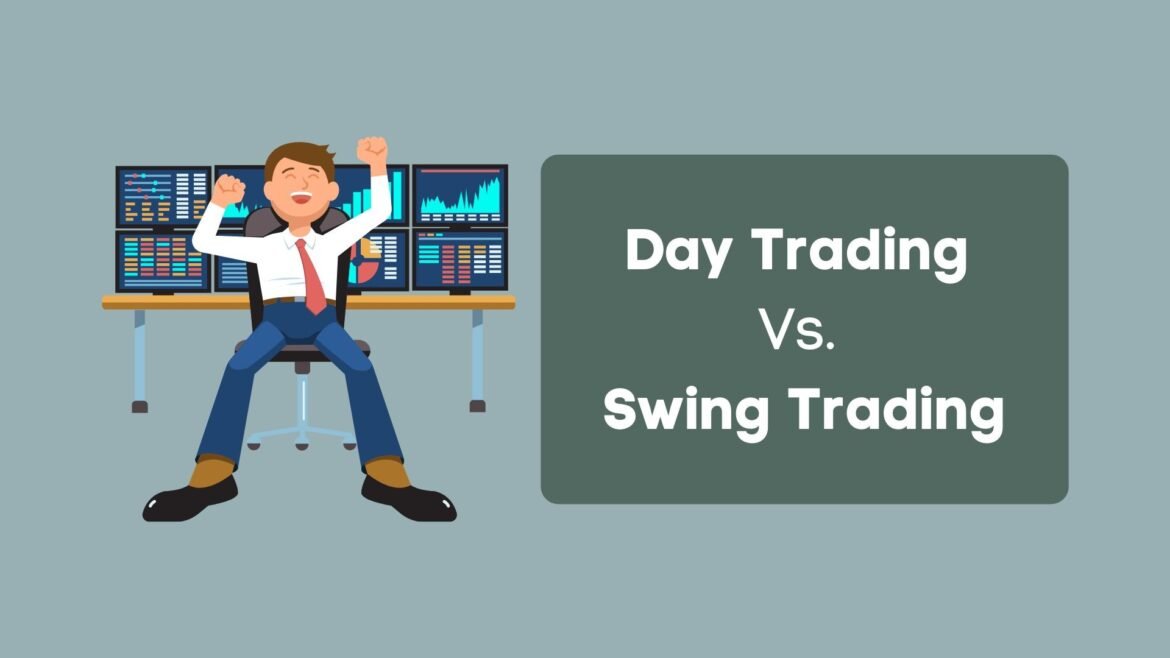Day Trading vs. Swing Trading: Which is Right for You?
Trading in the stock market presents different options, the most common being day trading and swing trading. Futures and options are strategies that bring together traders who want to speculate on the market and make money out of price movements, though they are also fundamentally different. Gaining insight into the differences between day trading and swing trading enables an investor to decide which strategy best suits him/ her based on his/her financial objectives, risk appetite, and time availability.
What is Day Trading?
Day trading is a professional style in which stocks, currencies, or other financial instruments are bought and sold in one day. The concept is to make the most of a price fluctuation within a single trading day. While there are other types of traders, day traders conduct multiple transactions within a single day, hoping to gain from low price swings. Leverage: Since all positions are closed before the market closes, there is no risk that the market will move against you when you are not around to manage the position.

Day trading involves a close, fast look at the market and quick decision-making. It is also highly active and could be opportune for a great deal of work for those who trade with the mentality of making fast bucks. The main draw to day trading is the possibility of getting profits within one day of investing, but it has high risks.
What is Swing Trading?
Swing trading is centered on catching relatively significant price fluctuations within several days or weeks. Swing traders use technical analysis to look for opportunities to take advantage of when entering a trade and when exiting. Swing trading focuses on having some positions open at night; hence, they are always vulnerable to price gaps or changes when the market is closed.

Swing trading strategies are less demanding than day trading strategies, so it is easy to neglect them and base decisions on long-term research. This approach is less challenging and suitable for those who would like to trade in parallel with other occupations or hobbies.
Time Commitment in Day Trading
The main relative distinction between day trading and swing trading is that the former requires more time. Day trading is highly time-consuming and requires a lot of concentration, as traders have to sit in front of monitors during the trading session. The high level of operation within day trading requires the trader to constantly observe price changes, events, and other aspects for quick decision-making.
If one is free and has adequate time to trade, day trading would be a perfect match. Still, if you have other responsibilities, this method will take up much of your time and cause stress.
Time Commitment in Swing Trading
Compared to other trading strategies, swing trading offers much more flexibility regarding time. However, infrequent market reviewing and research are involved, and traders are not compelled to keep abreast of the market as frequently as other traders throughout each business day. They can always check the market whenever they like to see the trends and make adjustments.
Swing trading also has an added advantage over other day trading because one does not need to be online all day making trades. It can also be much more relaxing to take a swing trading approach to financial markets while still being actively involved in them.
Risk Levels in Day Trading
Since trading is done within the same day, there are higher risks involved than trading. A stock price can fluctuate a lot within a day, and a day trader can lose a lot of money when they are not quick enough to make decisions. The fast trading approach that Day trading offers may also contribute to making wrong decisions based on emotions; this is a source of increased risk.
Though day trading offers high chances of gaining fast gains, it is also prone to significantly compromising a trader’s losses within the same scale. This is mainly a challenge for new traders or those generally tolerant of lower risk levels.
Risk Levels in Swing Trading
Swing trading typically has a lower risk due to the tactics used than day trading due to the holding period. This frees the trader to higher time frame analysis and prevents constant intraday moves from influencing the trader’s decision-making. However, swing traders remain exposed to overnight price changes and other events in the market that may affect their positions.
In summary, swing trading has a lower risk/reward ratio and is better for traders ready to invest
Profit Potential in Day Trading
The primary strategy with day trading is to make as many small profits as possible during the day. Since several trades occur daily, the possibility of earning for the trader increases, as does the collective chance of earning. However, this also means that each trade has a much lower profit and potential loss, which, if not well managed, can overwhelm the gains received from the possession.
Day trading means rapid trades, and the main attractant is the potential for quick earnings; however, it is not a simple task to do with profit very often.
Profit Potential in Swing Trading
Swing trading looks for 20—to 50-point targets, allowing for much greater reward points than day trading, giving it the potential for much bigger rewards with each trade. Day traders seek to make more significant percentage gains by trying to hold their trades for days and weeks. Of course, swing trading is not as intensive as day trading and may take slightly less time, but it still creates double and multiple incomes.
Because Swing traders are not interested in very active trades in the market, they can aim at more significant moves and thus have better chances of progressing.
Stress Levels in Day Trading
Day trading is very demanding because it operates in the fastest time frame. The situations described above mean that the market must be monitored constantly, and decisions must be made quite often; this generates pressure and emotions, which results in emotional trading. Aggressive traders may not perform well in day trading since the said business calls for decision-making under relatively short time horizons.
In the same way that some people get excited by taking risks and being in a busy environment that involves fast trades, day trading can be fascinating. Nevertheless, for some, learning might be an overload of stress far greater than the compensation they will gain.
Stress Levels in Swing Trading
Swing trading is slightly less stressful because each trade takes longer. Position traders are comfortable, free to study market patterns, and do not feel the heat of making rapid decisions. Swing traders have more time to act than day traders, thus resulting in less stress than day traders.
For those who do not want to monitor the market and constantly switch operations, swing trading can be a way to enter the market willingly.
Required Capital for Day Trading
Day trading generally involves more capital since there are many trades, and cash is needed to cover shorts. Many day traders employ margin accounts, through which they trade more contracts than the money they have on hand. This, of course, raises both the profit opportunity and the risk.
Finally, some markets have threshold capital requirements that one must meet before becoming a day trader, making it problematic and expensive for anyone lacking adequate capital.
Required Capital for Swing Trading
As mentioned, swing trading generally employs small amounts of money compared to day trading because the number of trades made is few, and the holding periods are more extended. Margin accounts do not have to be utilized as often by swing traders, and because the holding period is in the middle range, significant capital investments are not as crucial.
This makes swing trading easier for those with little capital or those starting trading without much money to invest.
Which Strategy is Right for You?
The most crucial determinant of whether to trade in day trading or swing trading is the trader’s characteristics, such as temperament, trading aims, tolerance to risk, and available time. If you love his tempo, can manage risky scenarios, and have time to devote several hours daily to the markets, then day trading is the optimal method. On the other hand, swing trading is the best bet for members willing to wait for long periods, who are okay with medium-term risks and who want more freedom from the market.
While both day trading and swing trading provide unique opportunities and some unique difficulties, knowing what separates them will make your choice more straightforward.
Conclusion
Day and swing trading are two trading styles appropriate for two sorts of investors. Day trading may excite you because of how active it is, while swing trading could feel like a better fit because of how much slower it is; however, one must always consider their need for generating profits, their ability to risk their money, and the amount of time that they are willing to dedicate towards trading. Both approaches have advantages and risks; however, both can be moneymakers correctly and consistently. Thus, the significant difference between day trading and swing trading is that it is a decision that considers your personality in the stock trading space and your goals.



